Hazrati Imam complex
Hazrati Imam complex
The architectural ensemble “Khazrati Imam”, Hast Imam or “Hastim” (“Holy Imam”), as Tashkent residents often call it, is is known as a religious complex of the in the old town part of Tashkent. For many centuries, various kinds of buildings were erected on this site, which eventually formed the current appearance of the ensemble.
Till 2007 Khazrati Imam square was not known as an ensemble due to the dilapidated condition of the buildings. Once great, medieval buildings, decorated with charming ornaments, were mostly in ruins due to the long lack of maintenance. The many small clay houses of the Tashkent old town also faced the same fate. However, when Tashkent declared itself as the cultural capital of the Islamic world, authorities began the restoration of Hastimam. In practice the old buildings were demolished and rebuilt as they are now and resulted as the fine complex they are now. A new vast Islamic center is being built next to the complex dwarfing all the buildings of the existing site. Hazrati imam is included in several of our Uzbekistan Tours and Central Asia Tours.
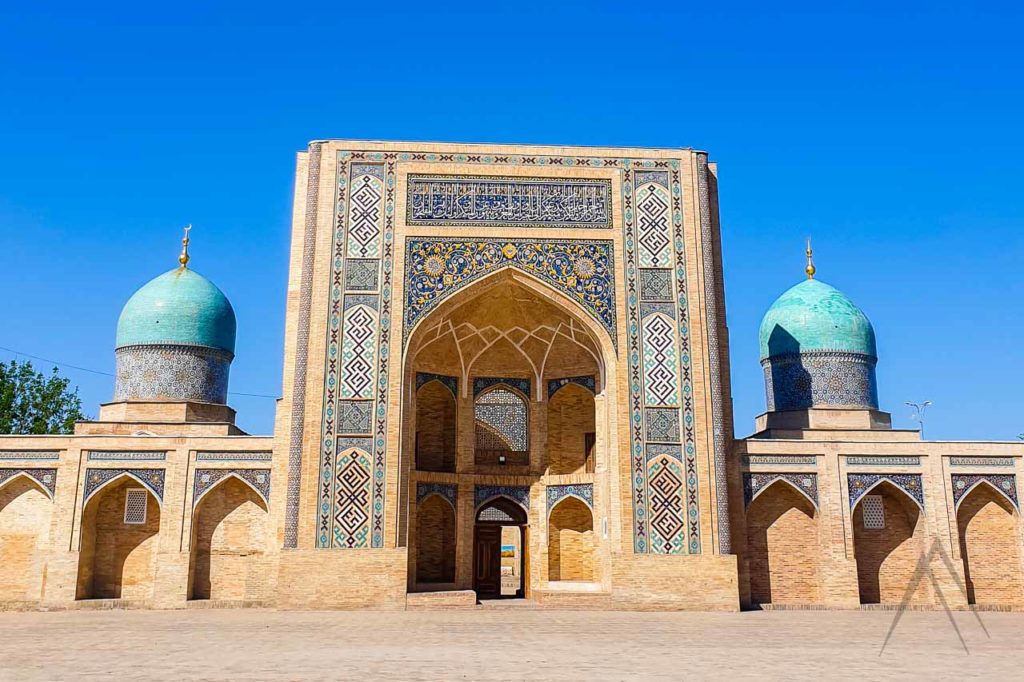
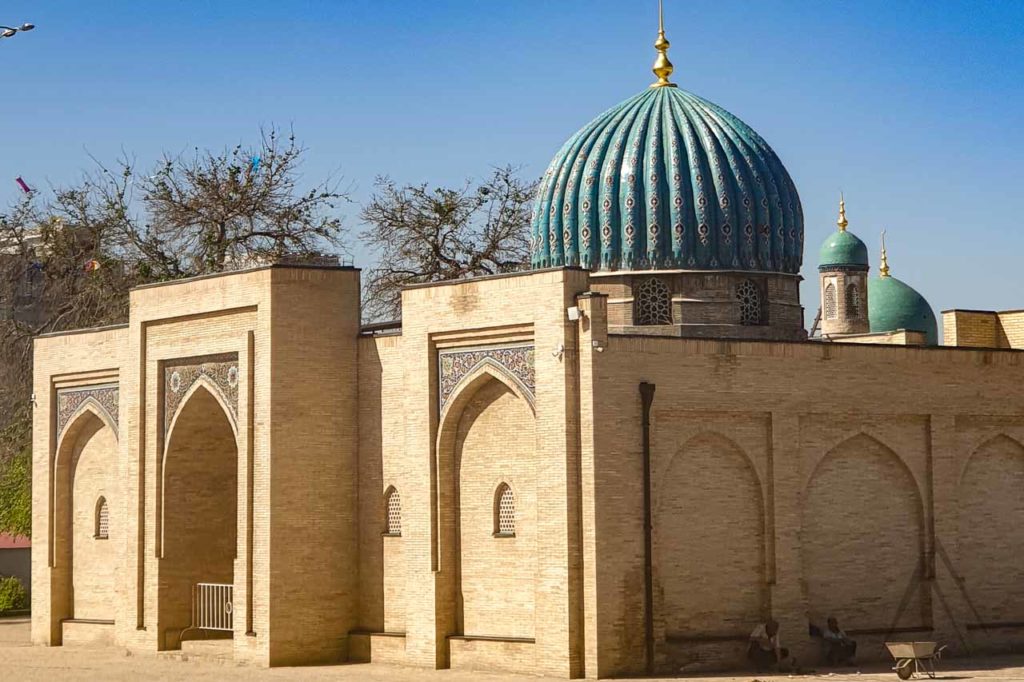
Hazrati Imam
The original name of Hazrati Imam is Abu Bakr al-Shoshiy with the full name is Abu Bakr ibn Ali Ismoil Kaffal ash-Shoshiy (there are also several other versions of his name). He was born in 903 in Tashkent, in the family of a lock manufacturer. Hence this where his nickname came “Kaffal” – “lock”.
Young Abu Bakr, not wanting to become just a simple artisan, went to study fiqh (the normative-legal part of Sharia) and other sciences. First,he studied in the madrasahs of Tashkent, Samarkand, Khorasan and then moved to the capital of the Arab Caliphate and the center of the science of the Muslim world – Baghdad, where he spent most of his life.
Inspired by major victories, the ruling Arab Caliphate periodically invaded the Byzantine Empire. Arab-Byzantine warriors raged not only on the battlefields but also on diplomatic fields. It was for this purpose that the Arab caliphs needed an experienced, intelligent diplomat, proficient in several languages and able to precisely and sharply notice the weaknesses of the enemy. This is how Abu Bakr al-Shoshiy appeared at the court of the Arab Abbasids.
There is a known case when the Byzantine emperor Nicephorus II ordered to write an evil letter to the Caliph in poetic form, to which Shoshiy Al Kabir answered him with a witty poem of 74 lines, written with the same meter, stanza and rhyme as Nicephorus II had. (It is fascinating to note that after 7 centuries such correspondence will take place between the Zaporizhzhia Cossacks and the Turkish sultan, which the artist Ilya Repin will skillfully reflect on his famous canvas). In addition to poetry, there are also known works on philosophy like “The Beauty of Dialectics” and Islamic law “Mahasinu Shariah”, written by Al Kabir which are still admired even today.
At the end of his life, the famous Tashkent resident honorably returned to his homeland, but the frequent raids of the Karakhanid Turks on the eastern territories of the Arab Caliphate did not allow him to calmly meet a noble old age. The situation was complicated as the Karakhanid tribes were not Muslims.
Al Kabir once again had to prove his diplomatic skills and convince the rulers of the Karakhanids to accept Islam and persuade them to rule peacefully. Due to this work, the Tashkent city elite started to call him “Hazrati Imam” (“Holy Imam”) and the Holy Patron of Tashkent. In the year 976, at the age of 73, Abu Bakr Kaffal Shashiy died and is buried in the mausoleum, which is still revered by Muslims around the world.
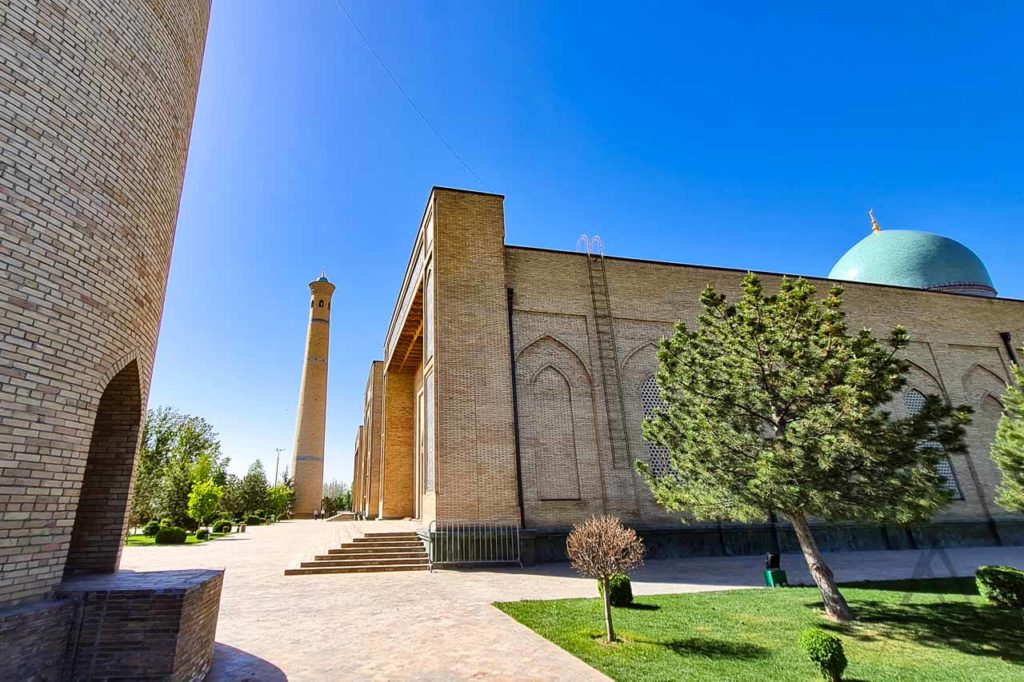
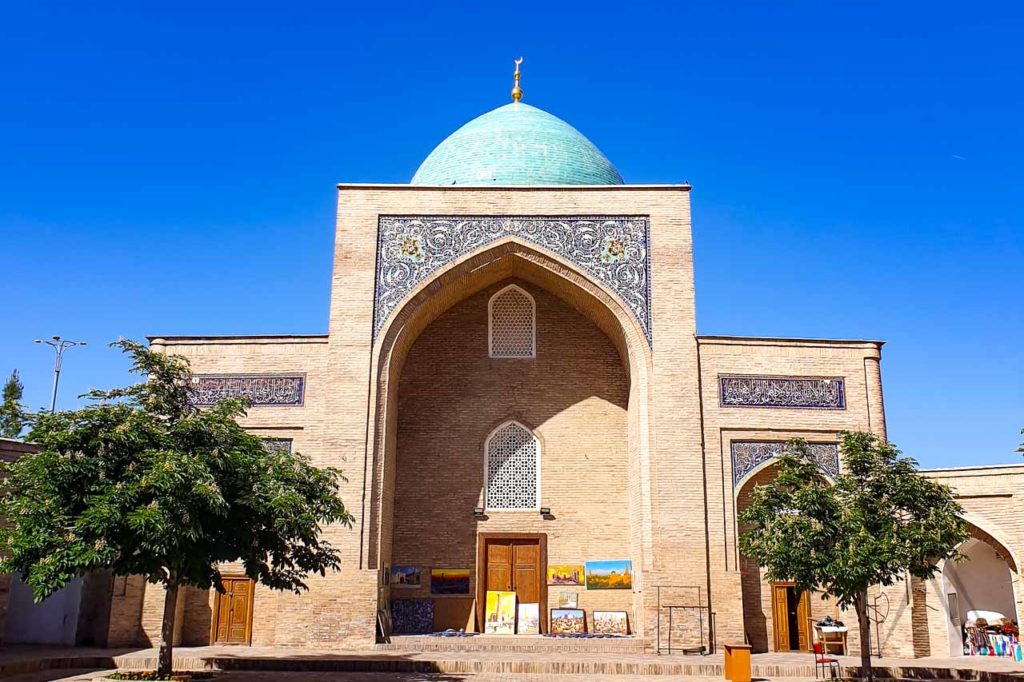
Tours including Hazrati Imam complex
Mausoleums of Hazrati Imam complex
Mausoleum of Khazrati Imam.
Hastimam’s mausoleum was destroyed several times and again rebuilt from the old bricks. The tomb received its present form of burnt slab bricks, decorated with majolica in 1541, as evidenced by the inscription on the facade of the building where also the architect of the mausoleum Gulyam Husein and the calligrapher Kudrat are mentioned.
At the beginning of the 20th century a low arch was built at the entrance, forcing everyone entering here to bow their head in front of the tomb of the great person inside. Around the Hastimam mausoleum there are many burials and gravestones of his sons, students and other respected people of his time. It is considered an honor to be buried near the Great Tashkent citizen.
Kaffal Shashi Mausoleum
The Kaffal Shashi mausoleum lies at the northwest corner of the Khast-Imam Square. Abu Bakr Mohammed Kaffal Shashi (904-979) was a native poet, linguist, polymath and scholar who lived in the 10th century and explored widely around the Islamic world.
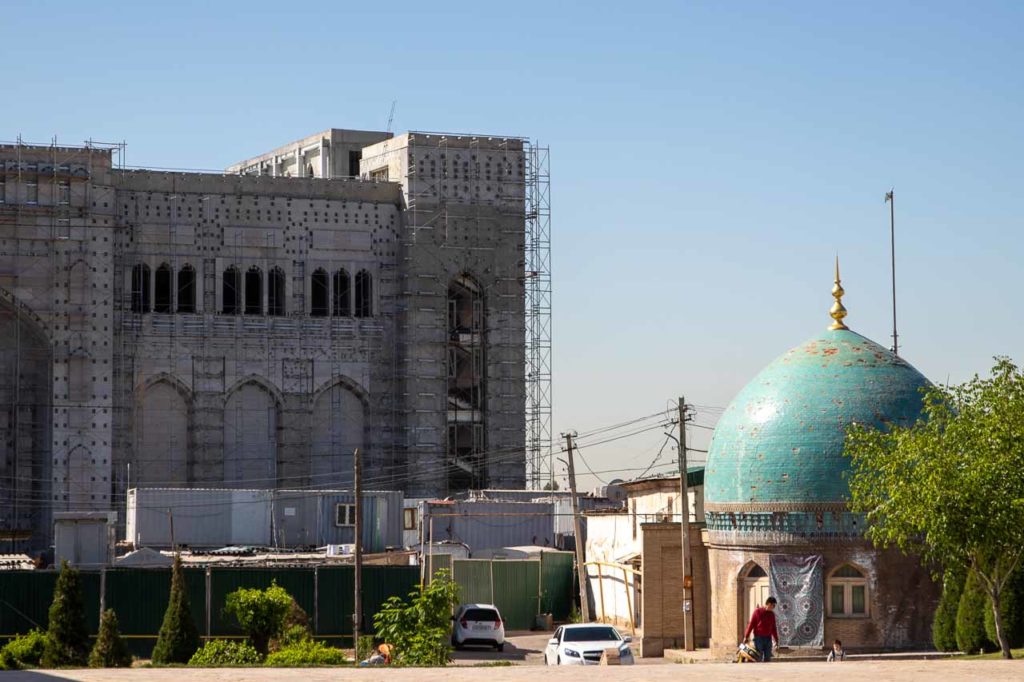

Madrasahs
Barak-Khan Madrasah
Barak-Khan Madrasah was built in the 16th century under the rules Navruz Ahmadkhan. His citizens thought that their ruler had great luck, therefore they named him Barak Khan, which translates as “Lucky ruler”. The madrasah was built next to the Hastim mahalla, which was the center of philosophy and science.
For more than five centuries this madrasah has been proving of the historical greatness of the capital of Uzbekistan. The madrasah has a courtyard that is enclosed by one-story khudjras. The main facade is divided by a gate with a half-octagonal niche, where the glazed tiles have been preserved. Medreseh shape describes a strongly extended trapezoid scheme from east to west and is built around an oblong courtyard.
Muyi Muborak Madrasah
Muyi Muborak Madrasah is an educational institute dating back to the 16th century and includes a museum and a library. Initially, the building served as a khanaka for dervishes. Khanaka was intended to give pilgrims shelter in the residential cells called hujras. Later the khanaka was used as a madrasah for students. Today Mui Mubarak madrasah serves as a library. It contains more than twenty thousand manuscripts, lithographs of spiritual content, translations of the Koran in more than 30 languages and thousands of books and manuscripts.
Hazrati Imam Library
The library collection contains the most valuable copies of the scriptures like the Qur’an of Uthman. It is believed to be one of the world’s oldest manuscripts of the Qur’an (644–648) and and is listed as UNESCO heritage. The manuscript was initially located in Medina but was then taken to Damascus and further to Baghdad, and later brought to Samarkand by Tamerlane. In the middle of the 19th century it was taken to St. Petersburg for examination and finally transferred to Ufa and further to Tashkent.
Khazrati Imam Museum
Inside the museum there is a shrine valuable to the muslim world – the hair of the Prophet Muhammad. In addition to this relic, the madrasah holds the country’s main religious library and museum.
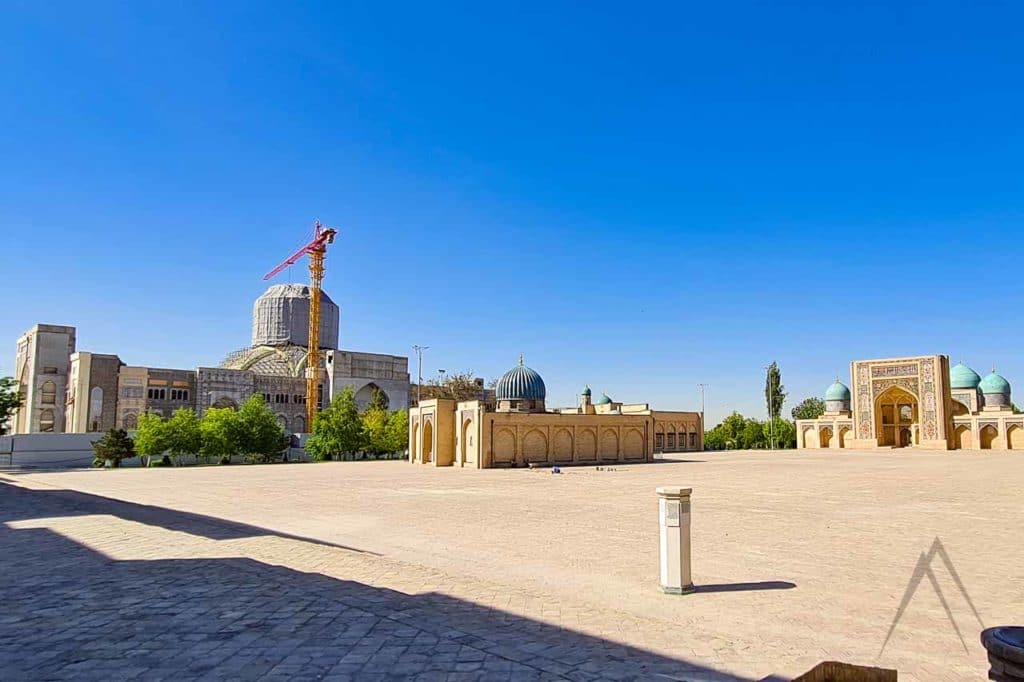

Mosques of Hazrati Imam Complex
Khazrati Imam Mosque
Hazrat Imam mosque has a pair of 53 m high minarets and two domes set in front of the square. The domes are covered with gold leaf from the inside and the round hall at the entrance is decorated with sandalwood columns.
The construction project of the mosque was not a cheap project with the sandalwood columns from India, green marble from Turkey and blue tiles from Iran. Although mosque was rebuilt only in 2007 the origin of the building dates to the 16th century.
Tilla Sheikh Mosque
Mosque Tilla Shaikh was built in the 19th century at the expense of one of the wealthiest residents of Tashkent, Kokand Khan Mirza Ahmed Kushbegi, who also built three other quarter mosques. He became famous as a respectable person and a devout Muslim, being well educated and not indifferent to the troubles of other people.
Inside the mosque is divided into two parts, each of which contains prayer niches. The mosque has two side minarets. Initially, they served not only as a decoration, but also acted as a lighthouse for trade caravans.
Mosque Namazgokh
Mosque Namazgokh appeared in the middle of the 19th century. Namazgokh means “golden sheik”, it refers to that times Kokand Khan – Mirza Ahmed Kushbegi. The mosque, measuring 56 x 15 meters, is decorated in a traditional style with a blue dome rising to the sky and patterned bars.
During the revolutionary period, this temple was destroyed and robbed. The mosque was restored in the 1970s.
The Building of the Spiritual Administration of Muslims of Uzbekistan
Board of Muslims of Uzbekistan
In the mausoleum of Abu Bakr Mohammed Kaffal Shash stands the administrative center of the Mufti of Uzbekistan. It is the head of official Islam in the Republic. The building was erected by folk craftsmen in 2007. The building is a functional office building for the state committee for religious affairs.
Other Sights in Tashkent
Page updated 22.7.2023